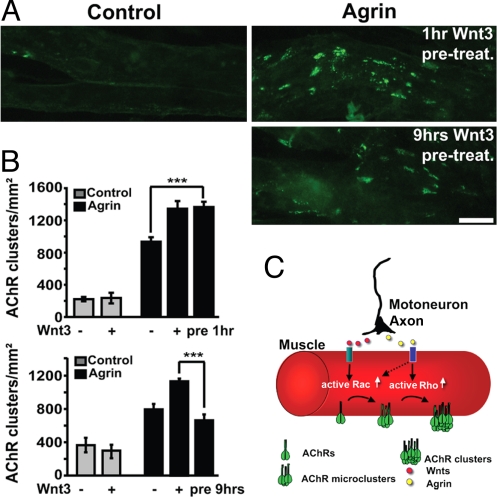Fig. 6.
Short-term exposure to Wnt3 enhances agrin activity. Myotubes were incubated for 1 h or 9 h with control or Wnt3 conditioned medium. Myotubes were then washed several times to remove the conditioned media before the application of agrin (pretreatment). (A) One hour pretreatment with Wnt3 followed by agrin induces a similar enhancement of clustering as observed when myotubes were exposed to both proteins as the same time (Right, Upper). However, 9 h pretreatment with Wnt3 followed by agrin does not increase the number of AChR clusters compared with agrin alone (Right, Lower). (B) Quantification reveals that 1 h preexposure to Wnt3 results in a significant increase in the number of agrin-induced AChR clusters (***, P < 0.001, t test, Upper), whereas application of agrin to myotubes pretreated with Wnt3 for 9 h does not significantly change the number of clusters compared with agrin alone (Lower). (C) Diagram summarizing the coordinated activities of Wnts and agrin in clustering AChRs at the NMJ. Both agrin and Wnt3 induce the formation of AChR micro-clusters through Rac1 activation. Wnt3 is more effective in activating Rac1 than agrin. These unstable micro-clusters function as nucleating centers for the formation of stable large clusters upon RhoA activation by agrin. (Scale bar, 20 μm.)

